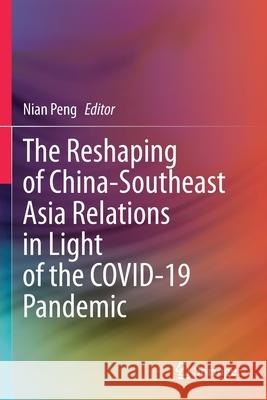The Reshaping of China-Southeast Asia Relations in Light of the Covid-19 Pandemic » książka
topmenu
The Reshaping of China-Southeast Asia Relations in Light of the Covid-19 Pandemic
ISBN-13: 9789813344181 / Angielski / Miękka / 2022 / 202 str.
The Reshaping of China-Southeast Asia Relations in Light of the Covid-19 Pandemic
ISBN-13: 9789813344181 / Angielski / Miękka / 2022 / 202 str.
cena 484,18 zł
(netto: 461,12 VAT: 5%)
Najniższa cena z 30 dni: 462,63 zł
(netto: 461,12 VAT: 5%)
Najniższa cena z 30 dni: 462,63 zł
Termin realizacji zamówienia:
ok. 22 dni roboczych
Bez gwarancji dostawy przed świętami
ok. 22 dni roboczych
Bez gwarancji dostawy przed świętami
Darmowa dostawa!
This book aims to examine the multiple effects of the COVID-19 pandemic on China-Southeast Asia relations from both Chinese and Southeast Asian perspectives. It invites many officials and scholars from the leading think-tanks and famous universities in China and Southeast Asian states to contribute and tries to reveal how has China-Southeast Asia relations been reshaping during/after the COVID-19 pandemic and discuss what kind of measures could be taken to push forward China-Southeast Asia relations and thus ensuring the peace and prosperity in the region.
The main content of this book is divided into 10 parts, in which the first chapter briefly introduces the COVID-19 situation in China and Southeast Asia, China’s anti-COVID efforts, and the impacts of the COVID-19 on China-Southeast Asia relations from Chinese and Southeast Asian perspectives. Chapter 2 examines the dual influence of the pandemic on the construction of China-ASEAN community of a shared future and gave some useful policy recommendations on improving China-Southeast Asia relations. The following 8 chapters go deep into the Southeast Asian states’ response to COVID-19 and the economic, political and social effects of the COVID-19 on Southeast Asia–China relations, and look forward the future development of such relations. In addition, it also analyzes Southeast states’ reactions to the intense Sino-US power rivalry during/after the COVID-19 pandemic.
This book is probably the first comprehensive study that investigates the impacts of the COVID-19 pandemic on China–Southeast Asia relations from both Chinese and Southeast Asian perspectives. It would not only open up a new area of study on China and Southeast Asia relations, but provide insightful observations and useful information for governments, companies and social organizations to facilitate cooperation in trade and investment, public health, and people-to-people exchanges. Therefore, the intended readership not only includes the academics but also officials, businessmen, journalists and social activists.
The most important feature of this book is that it points out China–Southeast Asia relations would be reshaped by COVID-19 in the long run and analyzes how it would be reshaped. It also shows a well-balanced view on the COVID-19 and China–Southeast Asia relations as both university scholars, think-tank experts and government officials are involved in this book.











